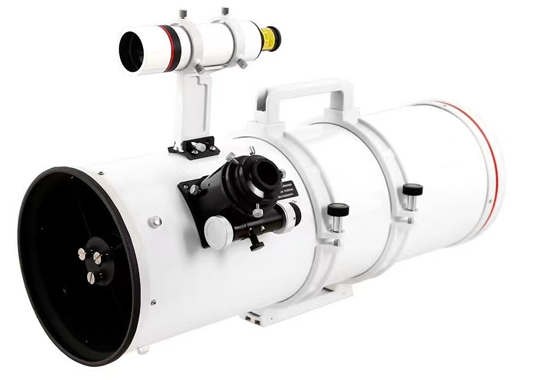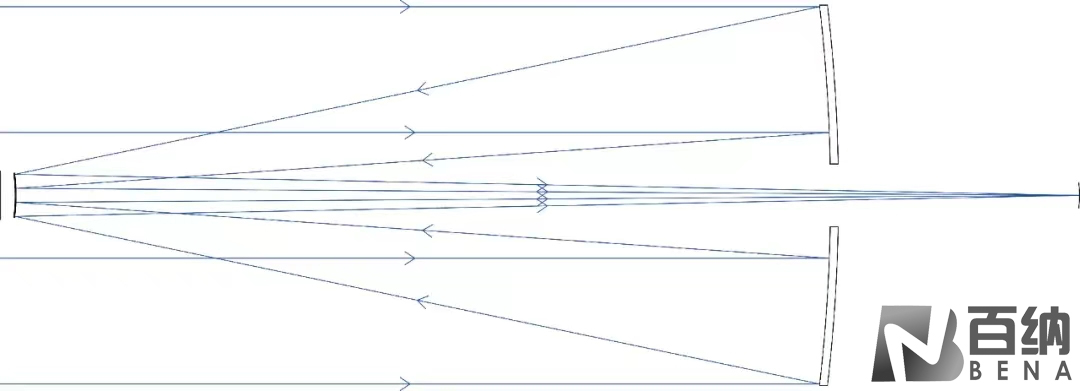Common reflecting telescope systems are typically of the Newtonian or Cassegrain type. These telescopes use a concave mirror as the primary mirror to converge light and form an image, thereby avoiding the chromatic aberration associated with lenses.

While contemporary scientists were attempting to reduce chromatic aberration by infinitely extending the length of telescopes, Newton believed that chromatic aberration in refracting telescopes was unavoidable. Therefore, he ground a 2.5 cm copper-tin-arsenic alloy into a spherical shape and used a flat mirror placed in front of the focal point to direct the focus out of the tube. In 1668, he successfully created the first reflecting telescope, known as the Newtonian telescope, which remains the most common type of reflecting telescope. In 1672, Cassegrain introduced a design featuring a parabolic primary mirror and a hyperbolic secondary mirror, which folded the light path into a very compact structure.
It is worth noting that Newton was not the first to design a reflecting telescope. In 1663, Gregory published an optical system in “Optica Promota” that used two concave mirrors to form an upright image behind the primary mirror. This design featured a parabolic primary mirror and a concave ellipsoidal secondary mirror placed behind the focal point, known as the Gregorian telescope. Since all surfaces in this design were aspherical, Gregory, lacking strong practical skills, was unable to produce a usable telescope. It wasn’t until 10 years later that Hooke successfully built a working model of this design.
Modern Newtonian reflectors use a parabolic mirror as the primary mirror, which converges parallel light rays to a focal point, thus avoiding spherical aberration caused by spherical mirrors (as shown in the diagram). However, stars located off axis mirror can appear distorted into comet-like shapes, a phenomenon known as coma.

Reflecting telescopes form images using mirrors, so light does not pass through lenses, eliminating the need for special glass. For the same aperture size, Newtonian telescopes are more affordable. Since the precision of the mirror surface significantly affects image quality, the accuracy of mirror fabrication is a crucial metric for evaluating reflecting telescopes. Modern Newtonian reflectors no longer use heavy metal for the primary mirror but instead use glass coated with aluminum. Because reflecting telescopes require a secondary mirror, they need to be collimated after being transported, which can be cumbersome.
Almost all large research-grade telescopes are reflectors. For example, the famous Hubble Space Telescope uses a Cassegrain reflecting telescope (as shown in the diagram). The primary reasons for this preference are the key advantages of reflectors over refractors: no chromatic aberration, lower cost, and the ability to achieve larger apertures.
